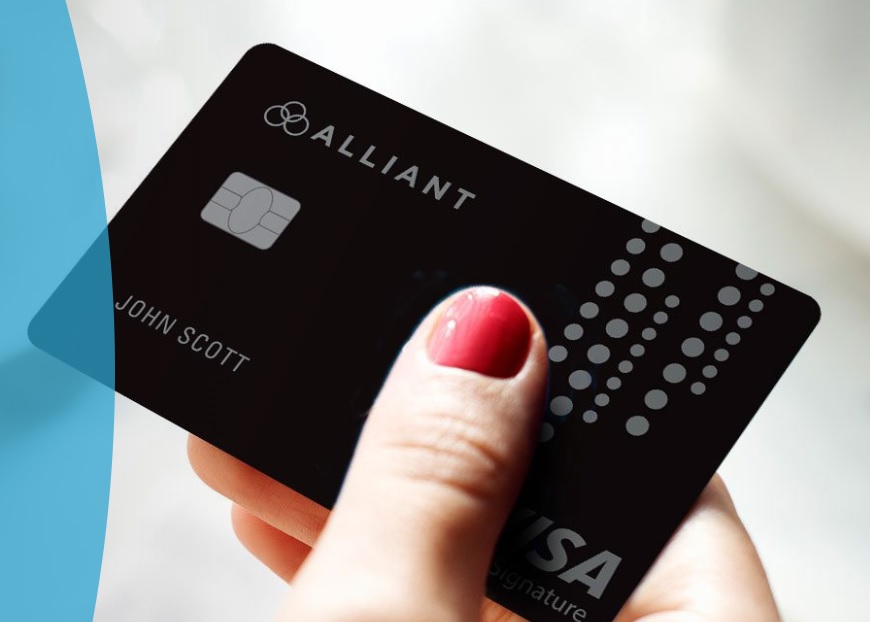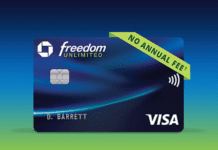NOTICE: This post references card features that have changed, expired, or are not currently available
Earning miles and points is a lot of fun and I really enjoy using them for experiences I wouldn’t ordinarily buy. But I don’t use miles and points for everything. Sometimes I pay the cash rate. Or I rent a car. I often eat. All of those things require cash — and so having a great cash back card is a key to a sound miles & points strategy. My response to that need has been the Alliant Cashback Visa Signature. However, an increase in that card’s annual fee has prompted me to ask: Is the Alliant Cashback Visa still worth it?
The Alliant Visa overview
The Alliant Cashback Visa Signature card offers a simple structure: earn 3% cash back everywhere for the first year, then 2.5% cash back everywhere after the first year. That’s a solid return and is my benchmark in terms of opportunity cost. More on that in a minute.
Alliant waives the annual fee for the first year. Until recently, the annual fee after the first year had been $59. However, a couple of days ago it was reported that the annual fee had increased. The fee is still waived in Year 1, but the landing page now indicates that the ongoing annual fee is now $99.
It’s worth noting that some people report approvals for this card being tough. Alliant’s target market for this card is those earning $100K per year or more, though anecdotally the ability to show $100K in assets may circumvent the income requirements
Opportunity cost benchmark
I mentioned above that the Alliant card is my personal opportunity cost benchmark.
Every time I make a purchase, I am essentially choosing between being given 2.5 pennies per dollar or some other reward. If I choose that “other reward”, I need to be sure that I’m making a good trade. If the “other reward” is 5x Ultimate Rewards points, it’s an easy trade. Those points are worth at least 5 pennies, so it’s a no-brainer. On the other hand, if I’m forgoing 2.5 pennies in favor of 1 IHG Rewards point, that’d be a horrible trade. I can often buy IHG points for half a cent each, so taking the 2.5 pennies per dollar is a much better choice as that could buy as many as 5 IHG Rewards points.
That has led me to largely use the Alliant card as the “everywhere else” card, good for those purchases that would not otherwise earn a valuable bonus. It’s a solid card for that purpose with its uncapped 3%-back structure for the first year and I’d argue is the best cash back offering on the market in year one. At 2.5% in future years, it still sounds like a sure winner over options earning 2% cash back. And it certainly can be. But its margin of victory in that race isn’t as wide as it looks.
Alliant first year vs Freedom first year
Again, the Alliant Cashback Visa is great for the first year. If you’re considering the Chase Freedom Unlimited “3x everywhere” offer (see this post for more) and you have no plans to pair that with a premium Chase card for transfers/higher value, you should probably drop that plan in favor of the Alliant card if you can get it. That’s because, unlike the Freedom Unlimited, your 3% earning power is not capped with the Alliant card. Don’t get overly excited about that: Alliant has been known to frown on obvious manufactured spending techniques (Simon Malls, online sites selling Visa gift cards, etc) by zeroing out rewards on some of those purchases and warning people or shutting down accounts. Large purchases on their own don’t seem to trigger shut down but rather large purchases from the most obvious places (at least in my anecdotal experience).
I’ve said before that I think the Freedom Unlimited 3x offer only makes sense for big spenders (since those who spend less would be better off with other Chase cards that offer a similar amount of bonus points with much less spend).
But is the Freedom Unlimited really a good choice for big spenders? Considering the Alliant card more carefully has me questioning that. Chase Ultimate Rewards can obviously be used for much more value than 1 cent per point, but let’s for a moment consider it as it is marketed (as a cash back card). After $20K in purchases in the first year, you would earn the equivalent of $600. The Alliant card would earn the same return on that spend.
Additional spend in the first year on the Freedom Unlimited card earns 1.5% cash back, whereas you would continue to earn 3% on the Alliant card through the end of your first year.
If you spend $30,000 on either card, these would be your earnings:
- Freedom Unlimited: $750 (3% on first $20K = $600 plus 1.5% on the next $10K = $150)
- Alliant Cashback Visa: $900 (3% on $30K = $900)
As you can see, the Alliant card would yield $150 more. Of course, the Alliant card will come out ahead on any amount of spend that is greater than $20K.
If you’re a really heavy spender, the gap makes it even more likely that you’re better off with Alliant. For example, let’s imagine you spent $60,000 in the first year. Your earnings on each card:
- Freedom Unlimited: $1,200 /120K Ultimate Rewards points ($20K x 3% = $600) + ($40K x 1.5% = $600)
- Alliant Cashback Visa: $1,800 ($60K x 3%)
At the risk of making this confusing, let’s consider the Freedom Unlimited earnings in terms of Ultimate Rewards points this time — $60K in spend would earn 120K Ultimate Rewards points. If you have the Chase Sapphire Reserve card, you could transfer those points to the Sapphire Reserve and then use them to book $1,800 in travel through Chase Travel℠. That’s good, but you could alternatively earn $1,800 cash with Alliant on the same spend and use that money to book travel anywhere you want — or to buy dinner, a Muji suitcase, or just save up for a rainy day. I do clearly understand that 120K Ultimate Rewards points could buy you more than $1,800 in travel if you master the transfer partners and use them well. But my point is that truly heavy spenders aren’t definitely better off with the Freedom Unlimited in year 1.
But what about Year 2? Real world earnings
That’s all well and good, but the impetus for this post wasn’t actually to compare the Alliant Cashback Visa with the Freedom Unlimited. What set me out to write about the Alliant card was the increase in annual fee.
That’s because cash back cards with annual fees are misleading. Your return will never quite match what is being advertised because of that fee — with enough spend, you can get infinitely closer to 2.5%, but never quite reach it.
Thus a 2.5% cash back card with an annual fee is not actually half a percent better than a 2%-back card with no fee.
At the $59 annual fee, the break-even point with a no-fee 2% card was $12,000 per year. Here’s how that works out:
- $12,000 spent on a 2% cash back card = $240 back
- $12,000 spent on the Alliant card in year 2 (2.5% back) = $300 back – $59 annual fee = $241
In other words, if you spent any less than $12,000 per year on the Alliant card (after the first year), you would actually earn less than you would with a 2%-back card. Any more than $12,000 in purchases and you’re ahead.
Now that the fee has increased to $99, the break-even point is $20,000 per year in purchases.
- $20,000 spent on a 2% cash back card = $400 back
- $20,000 spent on the Alliant card in year 2 (2.5% back) = $500 – $99 annual fee = $401
That’s a lot of spend to commit to the Alliant card year after year just to break even with a no-fee card.
But big spenders do better, right? They do….but is it enough better?
Let’s say you spend $40K per year. You’ll certainly do better with the Alliant card:
- $40,000 spent on a 2% cash back card = $800
- $40,000 spent on the Alliant card in year 2 (2.5% back) = $1,000 – $99 annual fee = $901
An extra hundred bucks is great — but more interesting to me is considering the actual return. Getting back $901 on $40,000 spend is a return of 2.25%. That’s certainly a good rate — but you have to spend forty grand to get it. Thirty grand spent and you’re only getting 2.17%.
As noted above, you’ll never quite get to 2.5% because of the fee, though you’ll get infinitely closer. I was curious as to how much you would have to spend to get the hundredths digit to the point where we’d ordinarily round up — how much spend does it take to get a return of 2.45% on the Alliant card in year 2? The answer: $198,000.
- $198,000 spent at 2.5% = $4,950 back – $99 annual fee = $4,851 back
- $4,851 ÷ $198,000 = 2.45%
That’s a heck of a lot of spend. If you spend more or less per year, adjust up or down. The fact is that it takes a lot of spend to out pace 2% by a meaningful amount.
So will I cancel the Alliant card?
All that explored, it would seem to follow that I’d want to cancel the Alliant card. After all, I need to commit a lot of spend to that one card to make it make sense. Note that I do not yet know if/when existing cardholders will be subject to the new $99 fee. But assuming we eventually are, the equation certainly gets complicated.
In my personal case, I’ll likely keep it for at least another year. I currently have some regular monthly bills that are not in bonus categories and thus make for a decent use of the Alliant card. I’ve already been charged the annual fee for this year (at the old $59 rate) and so I know I will come out ahead over a 2% card this year. If Alliant does indeed raise the annual fee for existing cardholders, I’ll need to seriously reconsider. A simple 2% back card like the Citi Double Cash or Fidelity Rewards Visa would produce easy no-brainer cash back that doesn’t require me to run equations and focus $X in spend while also freeing up spend to be put towards new card welcome offers.
Unfortunately, I think the annual fee increase on this card makes the long-term value proposition much more questionable and turns it into more of a pump-and-dump card that is good for its first year offer. That’s too bad as I like Alliant and like this card. But the math just doesn’t work in its favor for most customers in the long term.
More importantly, my 2.5% opportunity cost benchmark is clearly unfair. Realistically, I’d need to consider how much I actually spend on the card and determine my actual rate of return. For most of us carrying the card, that’s probably better than 2% — but my opportunity cost when spending on other cards definitely isn’t quite 2.5% after all.








Review: From the first statement until now this Card is a JOKE. When I call for anything all I get is lip service and sir we will have to transfer you to another department and they now even less than the first agent. The Alliant Cashback Visa® Signature Credit Card for 3% only applies to how much Alliant knows about the product they offer. Yes, they only know 3% of what you ask them and all have the same answer and cannot explain why they are not paying the 3% cash back and can only tell you how to access the page that shows how bad they are screwing you! Citi Double cash back card has competent staff and real online services with all the answers up front or as soon as you request them. I have never been so frustrated with a credit card or should I say credit union full of paid morons. I had to report two fraud charges on the card and they sent me a new card and rolled over the fraud charges to the new card and I had to fight them to get it removed. The Alliant Cashback Visa® Signature Credit Card -CLOWNS- have the worst reviews and deserve every single one of them. Anyone reading about the great cash back needs to think again unless they enjoy being lied to and scammed for the reasons why they are not receiving the cash back on what they are spending. I spent between 5 and 10 thousand every month and the cash back was $6 one month and $11 the next month. Wonder if these creeps have any other scam networks please share your reviews about Alliant and help others stay away from Alliant Credit Union. BEWARE – as any of the good reviews are fake and posted by Alliant staff and this is what I have read across many forums as the majority of real users only get the short end of the stiff and yes that end of the stick is BROWN and smells like Alliant!
Alliant card is no longer 3% on everything. They revised II(c) Earning cash back. it is pretty long and in the last they said “impermissible purchases such as purchases made for business purposes. I can upload the letter if allowed on this website. This policy is effective immediately.
Alliant front loads the annual fee on the card too, with no prorating of the fee if you cancel say in month 13 of having it. So if you hit it hard in month 12 and need wait for rewards to post in month 13, you’re stuck. One would have to cut off spend in month 11 and wait for it to post in month 12 to get out with squandering rewards. Although this would cost you a month of 3% spend in month 12.
The math/decision gets muddier then.
I still prefer BoA Premium Rewards
If it Works do it I got $2k to spend on my Citi Bus AA card then go back to Ink to get my OGG>ORD flt . I bet vastly different incomes here..
CHEERs
What?
Read Above Post a lot of this stuff only works for that person’s ” Game ” not your’s .
Game On
CHEERs
I’m comparing the BoA Premium Rewards to the Alliant Cashback. It seems like no contest now with the increased annual fee. BoA Annual is $95 with a $100 travel credit and Global Entry every 4-5 years. If you have enough assets to get 2.25-2.625%, it’s pretty much impossible to not get a better return with BoA.
2 new $20k NF 3x CFUs in the same household (already with a CSR) is the best deal.
Consider also the tax implications of using a cash back card for business expenses. You’ll be deducting 98% of your expense amount, instead of 100% if earning miles. So, if you are in a 35% bracket (earning 200k+) you’re net savings before considering the annual fee is 1.625%. . I’d rather earn miles –if I can , at 2x using the amex blue for business, and when that is maxed out put some spend on new card offers.
Add to this Alliant’s inability to do a good job detecting fraud (I think the 10 charges to Fiver and for internet electronics in a 24 hour period would have been caught by Chase and Amex), and Ill likely get rid of the card just for the back and forth I’ve had regarding those charges. Alliant removed them, then added them back when they transferred charges to the new card. It took me telling them I have a Masters in Public Accounting and worked many years for a bank before they stopped thinking they were right.
Now I’ve got a credit on my account I shouldn’t have. I think they have tripled counted the credit back.
Alliant uses an outside service bureau. They aren’t making anything on the card as far as I can tell, and it may be time to cull this card.
I can understand it still works for some. If I maxed it out every month I’d have $360,000 in charges.
But, then I’d likely be in the 37% bracket and the net value would be less than 1.625%.
I don’t think anyone has discussed the inability to deduct the full 100% of business expenses when you are getting cash back v points and miles.
How much “other” spend do you really do? Nearly every single category of spend has bonus rates on one card or another. In my case, even counting flexible reward points as a penny I can get 3% or better in Gas, Groceries, Restaurants, Pharmacy, Travel, Office Supplies, Phone, Cable, Internet, Amazon, and Streams. And that’s not even counting rotating categories. I use my Cash+ permanently on Gym and Utilities so you can add those in as well. And most of those are from $0 AF cards like Old Blue Cash (gas, groceries, and pharmacy) and Ink Cash (office, cable, internet, phone, and streaming). Even my Costco Visa (gas and travel) effectively has a $0 AF if you don’t associate your membership fee with it.
What’s left I typically use a VGC to pay for. At a $5.95 fee you wind up earning 3.87% on everything else. If I’m really worried about purchase protection, I “take a hit” and use my DC. Last year I spent under $600 on the DC so that was -$11
So why would I want to pay an annual fee for 2.5% or even 3%?
Cleaners; Doctor Appts; Net Medical Expenses/Physical Therapy; House Maintenance Expenses (HOA; Insurance; Terminix; Tree Care; Yard; Electrical; Plumbing); Alcohol Purchases Store/Clubs (not groceries); Beauty/Barber Shop; Car Insurance/Maintenance Expenses…
I can easily provide 20 more! I believe if folks check their Annual Statements, Misc is a real eye opener just how much non-bonus spend there is. Relying on 1 cc to pay for it (rather than cashing out gift cards) is much more efficient & accessible for record keeping, budgeting, & tax prep.
Congrats on still being able to itemize. The other 80% of us are all stuck on the enlarged standard deduction now so tax prep worry is pointless.
Average household consumption on non-essentials is $5948. Granted medical wouldn’t fit that, but most other “misc” is in there. The difference between 2.5% and 2% on that is under $30.
Congrats that healthcare is a non-factor for you, AB, maybe you are single? “A typical American family of four insured by the most common employer-sponsored health plan can expect to spend more than $28,000 on healthcare in 2018, according to the annual Milliman Medical Index report.”
Allocating that spend alone to the right credit card can make the difference between “buying” 1 RT plane ticket vs 2 (or more).
10% of taxpayers now itemize (rather than your suggested 20%), yet 100% of people who manage their finances should figure out where they are spending their money. Itemized credit card statements help tremendously with budgeting, and prepaid cards do nothing. People blindly spend a few bucks here & there on vending machines, parking meters, handlyman repair, oil changes, car washes, etc., yet there is a new cc available to super-maximize even small purchases. Should I buy a $1 soda at McDonalds for 3 – 4x or use the Citi Rewards+ card for 10x?
Keep doing what works for you, AB. For households with greater financial commitments, however, segregating non-bonus expenses to the right card most certainly can make a difference both in rewards and organizing outlays.
I’m right there with you — which is again why I suggested using category cards. If your out of pocket healthcare spending is that high it might be time to find a job with better benefits. Peace out.
And again AB, category cards are relevant to this discussion only when there is a category to actually use them. Paying healthcare providers/supplies/services is not one of them, and prepaid cards (as you suggest) is not the optimal alternative.
The study I presented you is from one of the world’s foremost company’s on the topic. It is not “my” problem . . . it is our country’s problem. And it will one day also likely be yours if even in the waning years/months/weeks of your life. I hope that’s later than sooner for you, but it (& best how to pay for it) is reality nonetheless.
Pam
Good post I paid $20k in a past years for single HC as in No Travel that year . I was very Lucky to get that Ins. the Feds called me telling me that .CC’s work well if u can use them which I couldn’t and really no tax write offs anymore I got $1k cash years ago. .
CHEERs
Thanks, CD, I would definitely at least run the numbers on whether those med expenses are deductible, you might be surprised. The AGI threshold for medical expenses was decreased from 10% to 7.5% for 2017 and 2018 for all taxpayers, that could make a difference for you in terms of deductibility. Hope it helps!
Pam
I have a very good CPA (20 years) with the same condition I HAD . That’s why he and My Lawyers always ask hows it Going HaHa ? I sent him a $500 bonus check on the 4th I value Good People .
CHEERs
BofA Platinum Honors?
Even Platinum Level with an effective no AF PR is probably superior.
My thoughts exactly while reading the article. Specially, the BofA Premium Rewards with Platinum Honors. 3.5X on travel & dining and 2.62X on everything else. Yes, there is AF of $95 but there is also $100 annual airline incidentals credit. If able to use 100% of the credit, BofA is paying you $5 to hold the card.